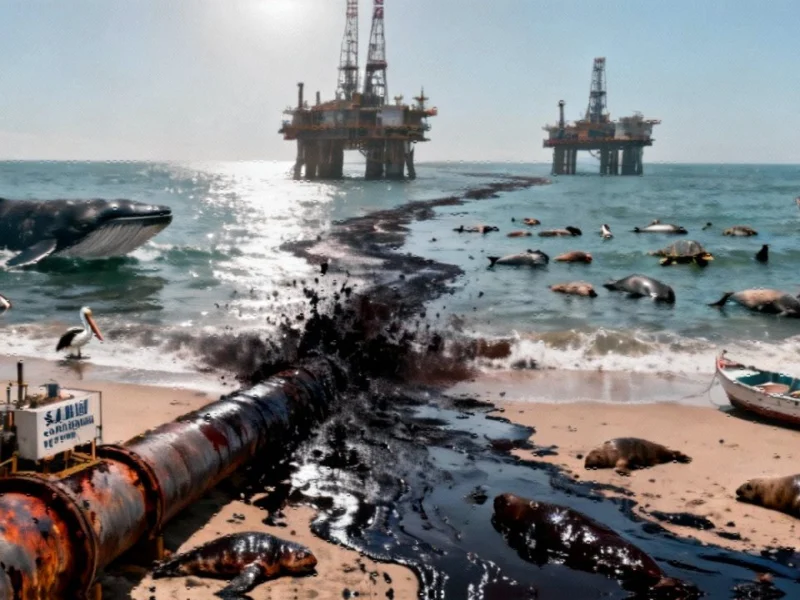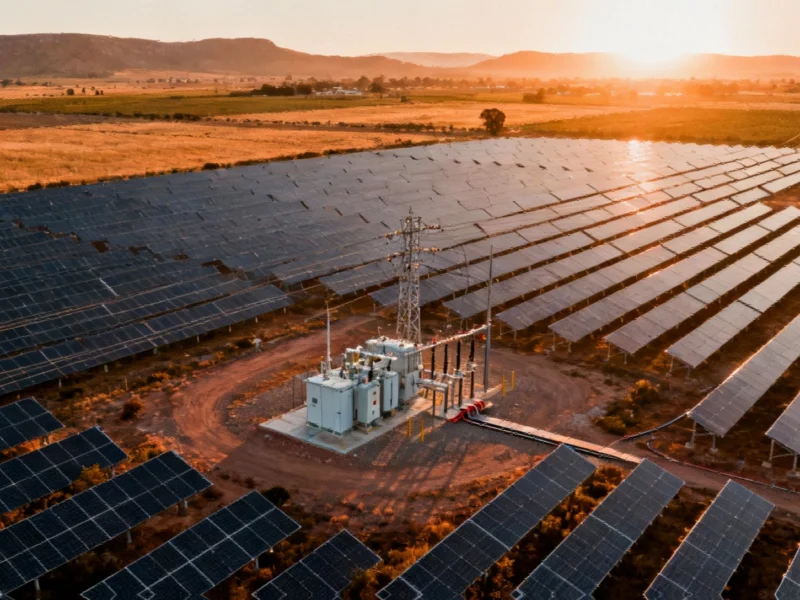Note: Featured image is for illustrative purposes only and does not represent any specific product, service, or entity mentioned in this article.
Federal Support for Offshore Drilling Sparks Controversy
In a move that has reignited debates over energy policy and environmental protection, Trump administration officials are throwing their weight behind a Texas-based company’s efforts to revive offshore oil drilling operations off the California coast. This comes nearly a decade after one of the state’s worst environmental disasters, when a ruptured pipeline belonging to Plains All American Pipeline released over 140,000 gallons of crude oil into sensitive marine ecosystems.
The administration’s endorsement represents a significant policy shift from previous restrictions on offshore drilling. As part of broader energy initiatives supported by federal officials, the government is actively removing regulatory barriers to increase domestic energy production. Interior Secretary Doug Burgum has been directed to reverse bans on future offshore drilling along both the East and West coasts, signaling a fundamental change in approach to energy development.
Sable Offshore Corp.’s Determined Push
At the center of the controversy stands Sable Offshore Corp., which purchased the dormant Santa Ynez Unit from Exxon Mobil in 2024 for nearly $650 million. The Houston-based company has faced numerous legal challenges and regulatory hurdles since acquiring the operation, which includes three decades-old drilling platforms located 5 to 9 miles offshore.
Despite these obstacles, Sable remains undeterred in its mission to restart production. Company CEO Jim Flores announced in May that the company had “safely and responsibly achieved first production,” though state officials quickly countered that only testing—not commercial production—had occurred. The discrepancy led to investor lawsuits and a drop in stock price, highlighting the contentious nature of the project.
Environmental Opposition Intensifies
Environmental groups have mobilized strongly against Sable’s plans, with several organizations filing lawsuits to block the project. “This project risks another environmental disaster in California at a time when demand for oil is going down and the climate crisis is escalating,” said Alex Katz of the Environmental Defense Center, the Santa Barbara group formed in response to a massive 1969 spill.
The opposition extends beyond environmental organizations. Actor and activist Julia Louis-Dreyfus, who resides in the affected area, has publicly implored officials to stop the project, stating at a March protest: “I can smell a rat. And this project is a rat.”
Regulatory Battles and Record Fines
California regulators have taken aggressive action against Sable, with the California Coastal Commission levying a record $18 million fine for ignoring cease-and-desist orders regarding repair work conducted without proper permits. The company maintains it had permits from previous owner Exxon Mobil and has sued the commission in response.
Additional legal challenges have emerged from multiple state agencies. The Central Coast Regional Water Quality Control Board, represented by the California attorney general’s office, sued Sable this month for illegally discharging waste into waterways and disregarding permit requirements along sensitive wildlife habitats. Meanwhile, the Santa Barbara District Attorney has filed felony criminal charges against the company for polluting waterways and harming wildlife.
Technological and Economic Arguments
Proponents of the project point to advancements in monitoring technology and safety measures that significantly reduce the risk of another major spill. The Bureau of Safety and Environmental Enforcement has emphasized that the failed pipeline has undergone rigorous testing and that continuous monitoring systems provide enhanced protection.
From an economic perspective, Flores argues that the project could help stabilize California’s gas prices, which rank among the highest in the nation. “Sable is very concerned about the crumbling energy complex in California,” he stated. “With the exit of two refineries last year and more shuttering soon, California’s economy cannot survive without the strong energy infrastructure it enjoyed for the last 150 years.”
Federal Waters Strategy
In a strategic move to circumvent state regulations, Sable has proposed confining its operations to federal waters, where California regulators have limited jurisdiction. The company is prepared to use a floating facility that would keep the entire operation in federal waters and transport oil via tankers to markets outside California if state officials block access to the onshore pipeline system.
This approach reflects broader industry trends toward navigating complex regulatory environments through technological and jurisdictional innovation. The company has updated its SEC filings to include this contingency plan, demonstrating its commitment to moving forward despite state opposition.
Broader Energy Policy Implications
The conflict over Sable’s operations represents a microcosm of the larger national debate about energy policy, environmental protection, and states’ rights. While the Trump administration pushes for increased domestic energy production, California continues its transition toward clean energy, with Santa Barbara County recently voting to begin phasing out onshore oil and gas operations.
As legal battles continue and both sides dig in their heels, the outcome of Sable’s efforts may set important precedents for future offshore energy projects and the balance between federal energy goals and state environmental concerns. The company’s determination to proceed—coupled with strong federal support—ensures this contentious issue will remain at the forefront of energy policy discussions for the foreseeable future.
This article aggregates information from publicly available sources. All trademarks and copyrights belong to their respective owners.



